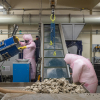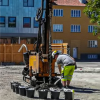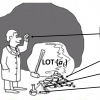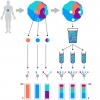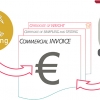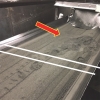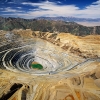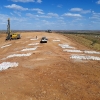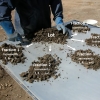Getting your sampling right can hardly be more important than in the nuclear waste industry. This column describes how the Belgian nuclear waste processing has benefited from the Theory of Sampling, and how it has led to important insights leading to significant potential improvements in the field of radioactive waste characterisation.
Sampling Columns
10th World Conference on Sampling and Blending
Correct sampling and analysis of raw materials are essential to ensure well-documented product quality and to contribute to a reduced environmental footprint. To this end, the WCSB10 conference covers the latest research and application experience of the Theory of Sampling and Blending.
31 May–2 June 2022, Kristiansand, Norway
Pages
A Special Section dedicated to examing the “Economic arguments for representative sampling” with contributions from over 20 representative sampling experts.
When previously industrialised or urbanised sites are redeveloped, the contamination of the soil is a vital consideration. It is essential that it is classified correctly as being fit for reuse or only for landfill, or even needing decontamination. When dealing with truck loads of soil, correct, representative sampling is essential to assure safety and to minimise unnecessary costs.
Kim Esbensen has enlisted the support of another doyen of representative sampling, Pentti Minkkinen. In the commercial world, the reason for analysis comes down to money: whether ensuring you are getting what you paid for, but not providing more than necessary, or in regulatory compliance and the avoidance of fines. Kim’s Column has been pushing the importance of not overlooking the sampling step since its beginnings, and this edition provides clear examples where the consequences are costly; very costly.
Many of you will be working in the cancer field, whether in diagnosis or research, in which case you will be very interested in this Sampling Column. Even if this is not your field of work, you will be interested from a personal point of view! It presents a fascinating idea and solution to improving the identification of different parts of a tumour and, thus, to provide better personalised treatment. “…in solid tumour oncology, representative sampling is truly a matter of life or death…”
This cannot be true—surely sampling and weighing are different activities. Well yes—and no! Sampling and weighing of traded metal, mineral and agro commodities are different activities—but at one or several stages in the supply chain they will come together in a single focus point, which is value ($, EUR).
The Sampling Column provides some easy-to-understand examples of what sampling errors are, what are the consequences of them and what can be done about them. Particular examples from pharma, PAT and NIR spectroscopy are provided.
Oscar Dominquez here presents the critical role of QM in the mining sector, where everything is BIG: tonnages, challenges, environmental impact, profits, risks—illustrating how proper sampling is a major critical success factor also here. But the mining sector view is not unique; the QM prerogatives can be carried over to very many other sectors as well.
There is hardly any other application field where correct sampling is as critically important than for Gold mineral resource estimation, because of the very low grades and the extremely irregular mineralisation heterogeneities encountered.
The sampling of particulate matter is all too often performed without consideration of the importance of representative sampling and the Theory of Sampling. This second part compares grab sampling with composite sampling further illustrating this important issue, and again using the example of contaminated soil which often has a very complex nature.


